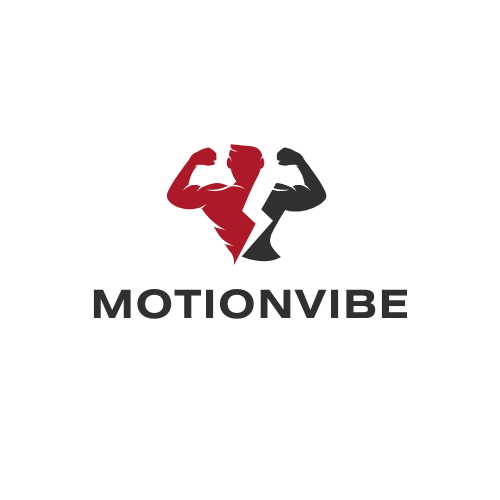When it comes to getting fit, the right exercise equipment can make all the difference. But let’s be honest—some of those names sound like they belong in a sci-fi movie rather than your living room. Ever tried explaining a “kettlebell” to someone? Sounds like a doorbell for a fancy kettle!
Importance Of Understanding Exercise Equipment Names
Understanding exercise equipment names simplifies the workout process. Many individuals feel overwhelmed by unfamiliar terminology. Knowing specific terms enhances confidence when purchasing or using equipment.
Certain names describe the equipment’s function, aiding users in choosing the right tools for their routines. Resistance bands, for example, are great for strength training. Stability balls target core muscles effectively. Users with knowledge of these terms make better decisions.
Recognizing the diverse types of equipment leads to a well-rounded fitness regimen. Names often reflect the benefits, such as jump ropes for cardiovascular improvement. Identifying synonyms like dumbbells and free weights broadens the vocabulary and the selection process.
When individuals understand equipment names, they engage with fitness communities more openly. They can ask informed questions and participate in discussions about effective workouts. This understanding fosters an environment of learning and growth.
Additionally, clarity in equipment names prevents confusion in gym settings. Knowing terms streamlines workouts, reducing the time needed to learn how to use new machines. Familiarity with equipment names enhances safety by decreasing the chances of misuse.
Commitment to this knowledge supports personal fitness goals. With familiarity, individuals feel empowered to explore new exercises. Ultimately, understanding exercise equipment names becomes a vital step in achieving a successful fitness journey.
Common Exercise Equipment Names

Understanding exercise equipment names helps users navigate their fitness journeys with ease. Familiarity with these terms creates confidence in selecting the right tools for workouts.
Free Weights
Free weights include dumbbells, kettlebells, and barbells. These items facilitate various movements, enhancing strength training routines. Individuals often use dumbbells for targeted exercises like bicep curls and shoulder presses. Kettlebells offer dynamic workouts, incorporating swings and snatches. Barbells enable heavier lifts, such as squats and deadlifts. Each type aids in building muscle and improving coordination. Recognizing free weights and their usage promotes effective workout strategies.
Resistance Machines
Resistance machines guide users through specific movements, ensuring correct form. Common examples include leg press, lat pulldown, and chest press machines. These devices target various muscle groups with adjustable weights for personalization. Individuals find that using machines can enhance stability, especially for beginners. Also, some machines offer guided ranges of motion, minimizing the risk of injury. Identifying resistance machines and their functions helps users tailor their training effectively.
Cardio Equipment
Cardio equipment comprises treadmills, stationary bikes, and ellipticals. Treadmills allow for walking, jogging, or running indoors. Stationary bikes provide low-impact workouts ideal for endurance training. Ellipticals combine the benefits of running and resistance, engaging the entire body. Each machine varies in intensity and duration, offering options for all fitness levels. Familiarity with cardio equipment aids in creating balanced workout regimens that prioritize cardiovascular health.
Specialized Equipment Names
Specialized exercise equipment serves unique purposes, catering to specific training goals. Awareness of these names enhances fitness experiences and promotes safer workouts.
Functional Training Tools
Functional training tools emphasize movements mimicking daily activities. Examples include resistance bands, medicine balls, and suspension trainers. These tools improve balance, flexibility, and strength by targeting multiple muscle groups. Fitness enthusiasts utilize these instruments for dynamic workouts that engage core muscles. Trainers often recommend incorporating them for full-body exercises and enhanced mobility.
Rehabilitation Equipment
Rehabilitation equipment focuses on injury recovery and mobility restoration. Equipment like stability balls, foam rollers, and resistance bands aids rehabilitation. Therapists use these tools to guide exercises promoting healing and muscle strength. Patients benefit from gentle movements that improve joint flexibility and prevent future injuries. Awareness of these specialized names supports informed choices in therapy and fitness environments.
Innovative Trends In Exercise Equipment Names
Exercise equipment names are evolving alongside advancements in fitness technology and trends. Branding plays a crucial role; manufacturers create distinctive names that capture consumer interest and reflect product uniqueness. Names like “smart dumbbells” highlight technological integration and feature tracking, appealing to tech-savvy fitness enthusiasts.
Emphasizing versatility, multifunctional equipment names emerge, such as “core trainer” or “total body machine.” These terms suggest more than a single purpose, attracting users seeking comprehensive workout solutions. Innovative combinations, such as “power tower,” evoke strength and functionality, positioning products as essential for various routines.
Cultivating engagement, some brands use playful names to draw attention. The term “battle ropes” suggests intensity and dynamism, appealing to individuals craving high-energy workouts. Unique naming enhances memorability, making it easier for users to discuss and recommend equipment within fitness communities.
Sustainability trends also influence naming conventions. Terms like “eco-friendly mats” signify a growing interest in environmentally conscious products, appealing to consumers prioritizing sustainability in their workouts. As fitness culture continues to shift, these names reflect broader societal values.
At the same time, cultural influences shape exercise equipment names. For instance, yoga accessories often carry Sanskrit names, connecting users to ancient practices and mindfulness principles. Such terminology fosters a sense of authenticity, enriching the user experience.
Finally, the evolution of exercise equipment names often mirrors fitness industry innovations. The rise of high-intensity interval training gives rise to equipment like “HIIT bench,” a name evoking the efficient nature of these workouts. By keeping names relevant and reflective of current trends, manufacturers enhance user connection and marketability.
Conclusion
Understanding exercise equipment names is essential for anyone looking to enhance their fitness journey. Familiarity with terms not only boosts confidence but also streamlines workouts and promotes safety. By recognizing the various categories and specialized tools available, individuals can make informed choices that align with their personal goals.
As the fitness landscape continues to evolve, staying updated on innovative equipment names and trends will further enrich the workout experience. Engaging with these terms fosters a sense of community and encourages participation in discussions around fitness. Ultimately, embracing the language of exercise equipment opens doors to new possibilities and a more effective approach to achieving fitness aspirations.

